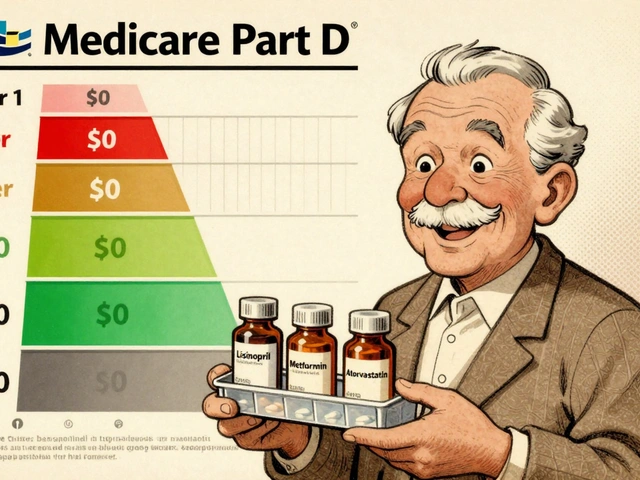Diabetes management: Practical steps to control your blood sugar
Most people with diabetes can avoid dangerous highs and lows with steady habits. This page gives clear, useful steps you can start using today — from checking glucose to handling sick days. No fluff, just practical advice.
Testing, targets, and patterns
Check your blood sugar when your team tells you to — often before meals, two hours after meals, and at bedtime. If you use a continuous glucose monitor (CGM), learn its alerts and the daily patterns it shows. Track readings in an app or notebook. Numbers tell a story: see trends, not single results.
Typical targets for many adults are 80–130 mg/dL fasting and under 180 mg/dL two hours after meals, but your doctor may set different goals. Share your logs at visits so your care plan fits your life. If you notice frequent lows or big swings, call your clinician — small changes in timing, dose, or food often fix it.
Meals, movement, and simple swaps
You don’t need a perfect diet. Focus on consistent carbs and portion control. A practical plate: half non-starchy veggies, a quarter lean protein, a quarter whole-grain or starchy carb. Learn simple carb counts: one slice of bread ≈15 g carbs, 1 small apple ≈15 g, 1/3 cup rice ≈15 g. Those numbers help dose insulin or choose meds.
Move more. Aim for about 150 minutes of moderate activity per week, split across most days. Short walks after meals lower blood sugar more than a single long workout. Add two sessions of strength training weekly to build muscle that uses glucose efficiently.
Small food swaps work: water instead of soda, Greek yogurt instead of sugary dessert, beans instead of fried sides. These add up faster than strict rules.
Medications matter. Take pills or injectables exactly as prescribed. Know what each medicine does: metformin improves liver glucose control, SGLT2 inhibitors help kidney and heart outcomes, GLP‑1s lower appetite and blood sugar, and insulin replaces or supplements your own. Ask your provider about side effects and interactions. Keep a current med list and refill on time.
Handle lows fast. Use the 15-15 rule: 15 grams of fast sugar (glucose tablets, juice), wait 15 minutes, recheck. If still low, repeat. Always carry a quick sugar source and wear an ID if you use insulin. For very low events, have a glucagon plan and teach someone close how to use it.
Know when highs become dangerous. If sugars stay very high and you have nausea, vomiting, or fruity breath, check ketones (if advised) and contact urgent care — diabetic ketoacidosis can be serious.
See your team regularly for A1c checks, foot exams, eye exams, and vaccine updates. Protect your feet: check daily, keep skin clean and dry, and wear well-fitting shoes. Pack extra supplies for travel and have a sick-day plan so you can act fast when symptoms change.
Small habits beat big fixes. Test, eat predictable carbs, move regularly, take meds properly, and ask for help early. Those steps make life with diabetes safer and simpler.

Exploring Sitagliptin Alternatives in 2025: What You Need to Know
Navigating the complex world of diabetes medications can be overwhelming. In 2025, Sitagliptin has viable alternatives that address various patient needs. This article delves into these options, detailing their benefits and drawbacks. You'll learn about emerging treatments like Trulicity that promise enhanced blood sugar control, cardiovascular benefits, and unique administration methods.
Read More




